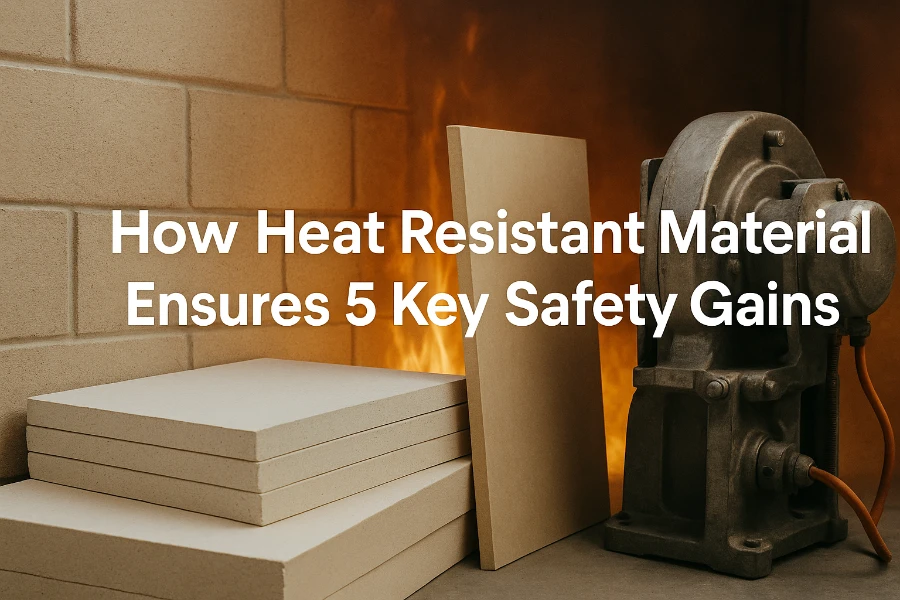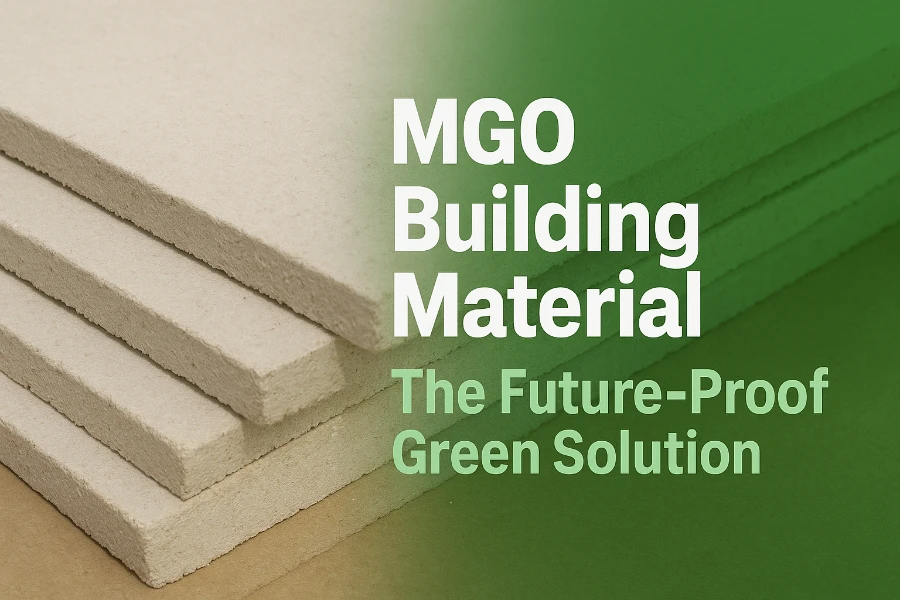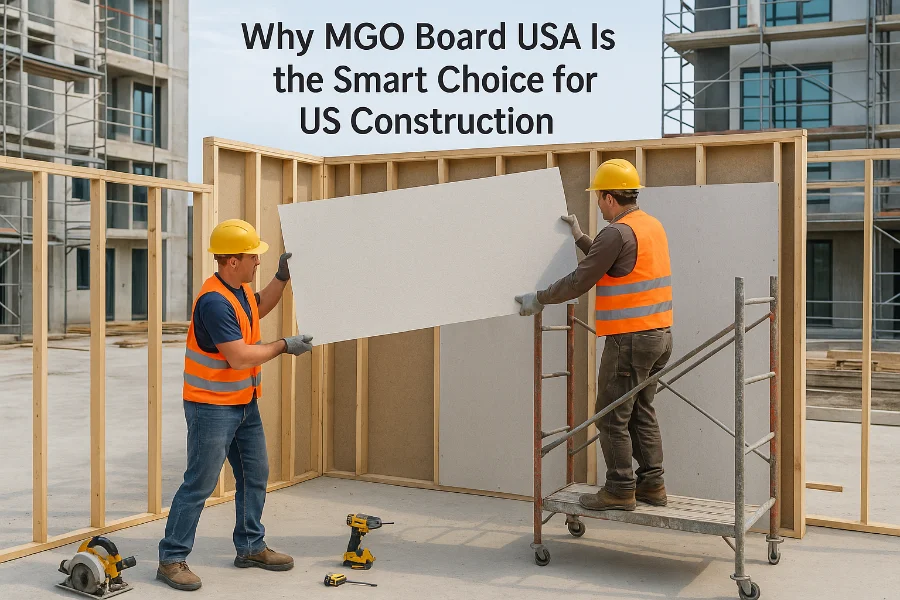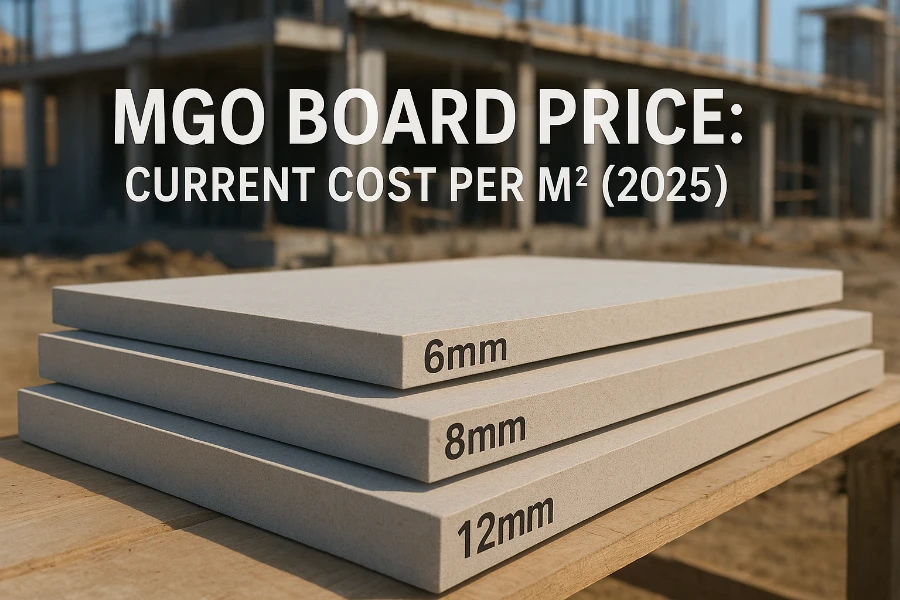Table of Contents
Introduction
In today’s world, safety and durability are top priorities in construction and industrial settings. One of the most effective ways to enhance safety is by using heat resistant material. These materials are specially designed to withstand high temperatures, prevent fire hazards, and maintain structural integrity under extreme conditions.
Whether it’s for commercial buildings, residential projects, or industrial facilities, heat resistant material plays a crucial role in protecting both people and property. From reducing fire risks to preserving structural stability, these materials provide multiple advantages that go beyond ordinary building supplies.
In this article, we’ll explore 5 key safety gains that heat resistant material offers, highlighting why choosing the right material can make a significant difference in long-term safety and efficiency.
Understanding Heat Resistant Material
What It Is and Common Types
Heat resistant material refers to substances engineered to tolerate high temperatures without losing their strength, shape, or functionality. Common types include:
-
Magnesium oxide (MgO) boards – widely used in fireproof construction panels
-
Ceramic-based materials – ideal for furnaces and industrial equipment
-
Fire-rated gypsum boards – common in walls and ceilings for residential and commercial buildings
-
Specialty composites – tailored for extreme industrial applications
These materials differ in composition, temperature tolerance, and application methods, but all share the goal of improving safety under heat exposure.
Why It Matters in Construction and Industry
Using heat resistant materials isn’t just about compliance—it’s about preventing accidents, minimizing property damage, and extending the lifespan of structures. In industrial settings, these materials protect machinery and equipment from thermal stress. In buildings, they reduce fire risks and provide occupants with crucial extra minutes in case of emergencies.
By understanding the properties and applications of different heat resistant materials, designers, architects, and engineers can make informed choices that maximize safety, durability, and cost efficiency.
Safety Gain #1 – Fire Resistance
One of the most obvious and critical advantages of heat resistant material is its fire resistance. These materials are designed to withstand direct flames or high temperatures without igniting, slowing down the spread of fire. This property is especially important in buildings, factories, and transport systems, where uncontrolled fire can cause catastrophic damage.
For example, magnesium oxide (MgO) boards are widely used in walls, ceilings, and partitions for their ability to resist high heat. In industrial facilities, ceramic composites protect furnaces, pipes, and machinery from fire hazards, preventing downtime and expensive repairs. Even in residential applications, fire-rated gypsum boards offer a critical barrier, giving occupants extra minutes to evacuate safely in case of fire.
By integrating heat resistant materials into construction and industrial design, fire risks can be minimized, property damage reduced, and lives potentially saved. The reliability of these materials in extreme conditions makes them an essential component of modern safety strategies.
Safety Gain #2 – High Thermal Stability
Beyond resisting flames, heat resistant materials provide high thermal stability, meaning they maintain their shape, strength, and performance even under prolonged exposure to high temperatures. Unlike ordinary building materials, which may warp, crack, or weaken under heat, these materials ensure structural integrity in critical areas.
For instance, industrial kilns, metal processing units, and chemical plants often rely on ceramic-based panels that tolerate extreme heat without deformation. In construction, MgO boards and fire-rated panels keep walls and floors stable during fires or high-temperature conditions, preventing structural collapse.
High thermal stability not only safeguards structures but also reduces maintenance costs and extends the lifespan of materials. For architects and engineers, this property is a major factor in long-term planning, ensuring that buildings remain safe and reliable for decades.
Safety Gain #3 – Enhanced Worker and Occupant Safety
Using heat resistant material significantly improves worker and occupant safety. Materials that can withstand heat and fire reduce the risk of burns, injuries, and exposure to toxic fumes in both residential and industrial environments.
In factories, specialized heat-resistant panels and coatings protect workers near furnaces or high-temperature machinery. In offices and homes, fire-rated walls and ceilings slow down the spread of fire, allowing more time for evacuation. Additionally, these materials prevent accidents related to structural failures caused by heat, further protecting lives.
By investing in heat resistant materials, companies and property owners demonstrate a commitment to safety, not only complying with regulations but actively preventing hazards. The peace of mind that comes with knowing a building or facility is protected cannot be overstated.

Safety Gain #4 – Durability Against Heat Damage
Another key advantage is durability against heat damage. Ordinary materials can crack, warp, or degrade when exposed to high temperatures. Heat resistant materials, on the other hand, are designed for long-term performance, retaining their strength and functionality over time.
For example, MgO boards resist warping and shrinking even under prolonged heat exposure, making them ideal for fireproof walls and floors. Industrial ceramics can survive repeated thermal cycling without breaking down, reducing maintenance frequency and replacement costs. This durability ensures that safety features remain effective over years of use, offering both economic and practical benefits.
Safety Gain #5 – Environmental and Health Protection
Finally, many heat resistant materials offer environmental and health protection. Unlike some fireproof coatings or chemicals that release toxic fumes under heat, materials like MgO boards are non-toxic, eco-friendly, and recyclable.
In residential and commercial buildings, this means safer indoor air quality during high-heat events or fires. In industrial applications, it reduces environmental impact and contributes to sustainable building practices. Choosing materials that combine heat resistance with environmental responsibility allows architects and engineers to meet both safety and sustainability goals simultaneously.
By selecting the right heat resistant materials, projects not only safeguard people and property but also support long-term environmental health—a critical consideration in modern construction and industry.
Choosing the Right Heat Resistant Material
Selecting the appropriate heat resistant material is crucial to maximize safety and efficiency. Several factors should be considered:
-
Application Environment: Indoor walls, ceilings, industrial machinery, or outdoor structures each require different temperature tolerances and fire ratings.
-
Material Properties: Consider thermal stability, fire resistance, durability, and non-toxicity. MgO boards, ceramic panels, and fire-rated gypsum boards all offer unique advantages depending on the context.
-
Cost vs. Longevity: Investing slightly more upfront in high-quality heat resistant materials often reduces long-term maintenance and replacement costs.
-
Regulatory Standards: Ensure materials meet local fire codes and industry standards for safety and environmental protection.
By evaluating these factors carefully, architects, builders, and engineers can choose the most suitable material, ensuring that safety gains are fully realized while optimizing cost and performance.
Conclusion
Heat resistant material is more than just a building component—it is a critical safety feature. From fire resistance and thermal stability to worker protection, durability, and environmental safety, these materials provide comprehensive safeguards in construction and industrial applications.
Investing in the right heat resistant material not only enhances safety but also ensures long-term durability, reduces maintenance costs, and supports sustainable practices. Whether you are constructing a residential building, industrial facility, or commercial property, selecting high-quality materials is a smart and responsible choice.
Ready to boost safety and performance with the best heat resistant materials? Contact our experts today to find the ideal solution for your project.
Discover why MGO building material is the future-proof green solution for durable, fire-resistant, and eco-friendly construction projects.
Discover why MGO board USA is the smart choice for American construction—fire-resistant, durable, eco-friendly, and compliant with US building standards.
Discover the current MGO board price per m² in 2025. Learn factors affecting cost, compare with fiber cement boards, and get tips to save on your project.




